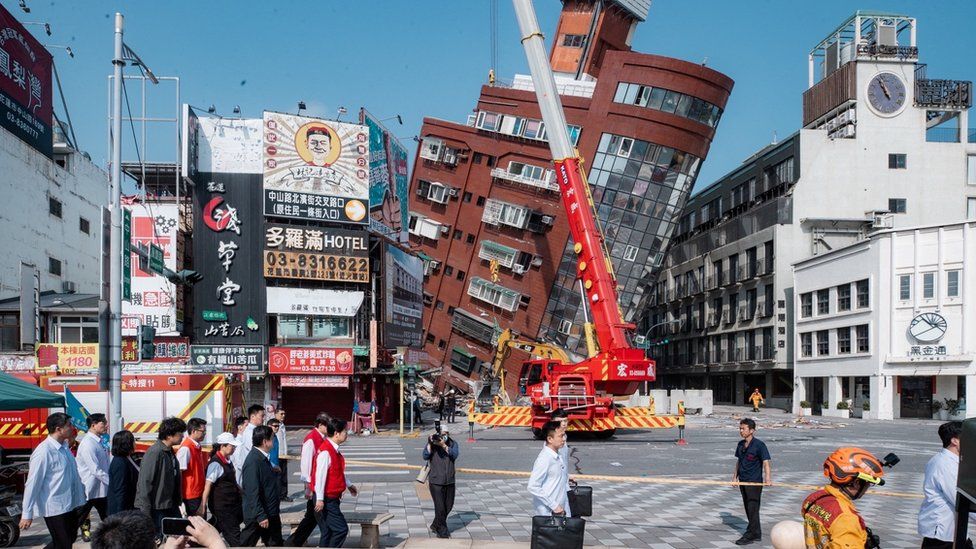ARTICLE AD BOX
 Image source, Reuters
Image source, Reuters
Taiwan President-elect Lai Ching-te inspects the damage following the earthquake, in Hualien
The people of Taiwan have woken up to the aftermath of its worst earthquake in a quarter of a century.
Rescue efforts continued on Thursday after a 7.4 magnitude earthquake struck the island's eastern coast on Wednesday at 07:58 local time 23:58 (GMT).
At least nine people were killed and more than 1,000 injured when the quake hit 18km (11 miles) south of Hualien.
More than a hundred people are still understood to be trapped in collapsed tunnels and roads along the coastline.
Rescue operations to reach 77 people trapped in the Jinwen and Qingshui tunnels along the road in Hualien continued into the early hours of Thursday morning.
Pictures show how the road outside the Qingshui tunnel had simply fallen away.
There are many narrow, winding roads and tunnels carved out of the rock and mountains that run along Hualien's rugged coastline.
The route is popular with tourists, famed for its spectacular views from the mountains out across the Pacific Ocean. But it is also known to be treacherous, not least because of the possibility of landslides.
One of the routes takes locals and tourists to the Taroko National Park, named after a landmark gorge, just outside Hualien, which is considered to be one of the natural wonders of Asia. Three of those who died were hikers on a trail there and 50 of those who are trapped are staff who were being transported to a popular hotel, ahead of a four-day long weekend.
It is unclear how long those inside will be trapped - and whether or not they have food and water, or can communicate with the outside world.
The earthquake also triggered tsunami alerts earlier in the day on Wednesday in nearby Japanese and Philippine islands - but the alerts were later downgraded.
It caused the most damage in Hualien, where buildings fell, roads were blocked and train lines disrupted, leaving the remote region even more cut off from the rest of Taiwan.
"I was just getting out of bed when a clothes rack and a low cabinet fell over," Ocean Tsai, who lives in Hualien, told BBC Chinese. "It kept getting stronger, and I started worrying about our belongings at home. Fortunately, apart from the motorcycle tipping over, the damage was minimal."
Social media was soon filled with extraordinary footage of landslides along the coast. They tumbled down the mountains, making huge clouds billow up from the sea as they crashed into it.
Further north, Taipei was also shaken violently with footage showing collapsed residential buildings, and people being evacuated from their homes and schools. Local TV stations aired clips of smashed vehicles and stores in disarray.
Power cuts and internet outages were reported across the island.
"The earthquake is close to land and it's shallow. It's felt all over Taiwan and offshore islands... It's the strongest in 25 years," said Wu Chien Fu, the director of Taipei's Seismology Centre.
Wednesday's earthquake struck at a depth of 15.5km and set off at least nine aftershocks at magnitude 4 or larger.
The impact of the 7.4 magnitude earthquake in Taiwan
While Taiwan has a history of quakes, both locals and foreigners who have lived in Taipei for years say this is the strongest quake they have experienced in decades.
The last major quake - at 7.6-magnitude - hit in September 1999, killing 2,400 people and destroying 5,000 buildings.
Taiwan's foreign office issued a statement on X expressing thanks for the offers of aid from "allies and friends" like Japan and Paraguay.
It also thanked China for its concern but said there would be no request for assistance from that side. Beijing claims sovereignty of the self-governed island, which sees itself as distinct from China

 9 months ago
84
9 months ago
84








 English (US) ·
English (US) ·